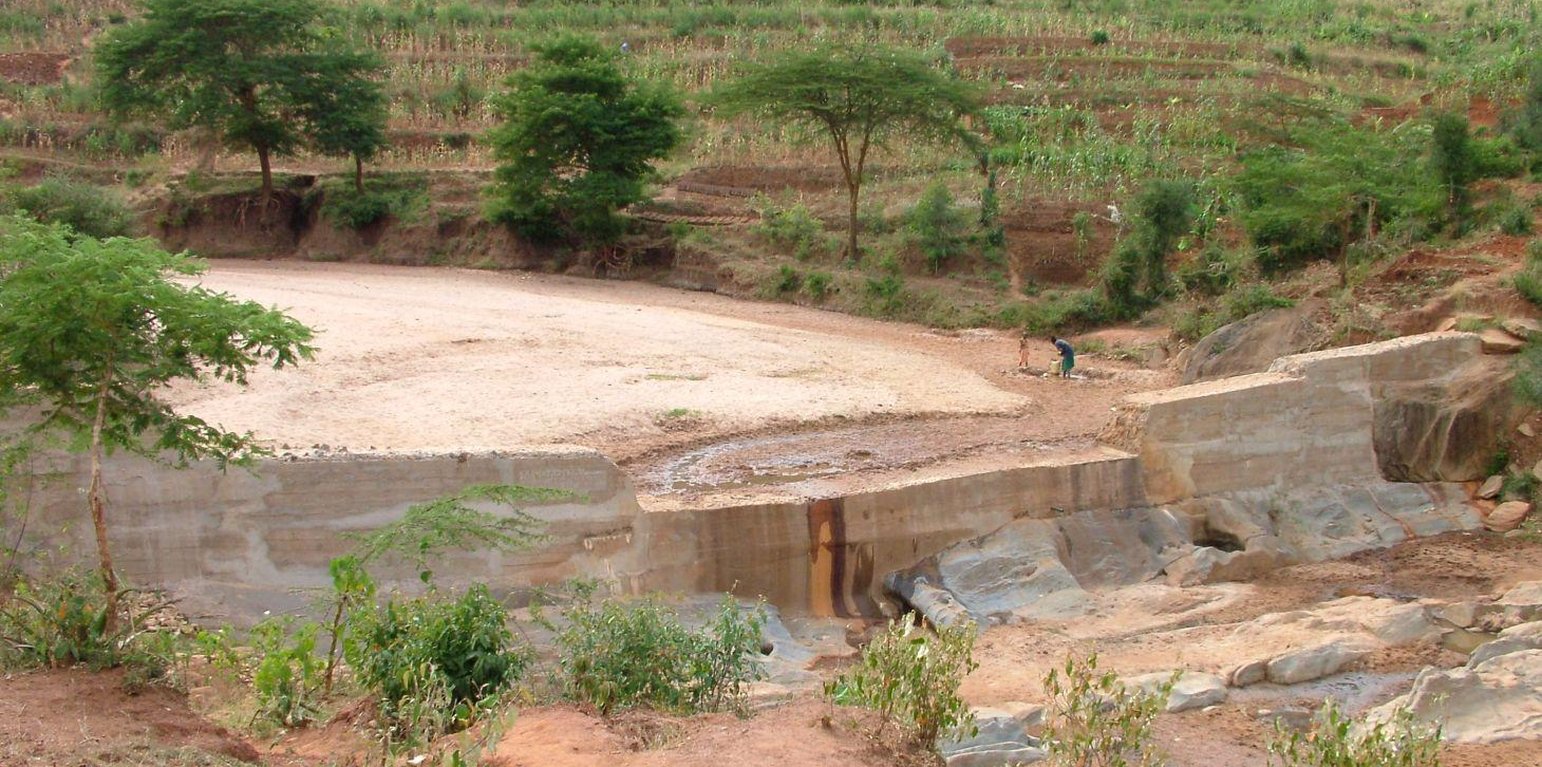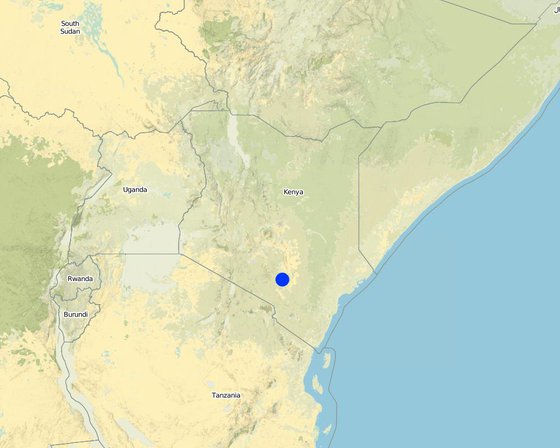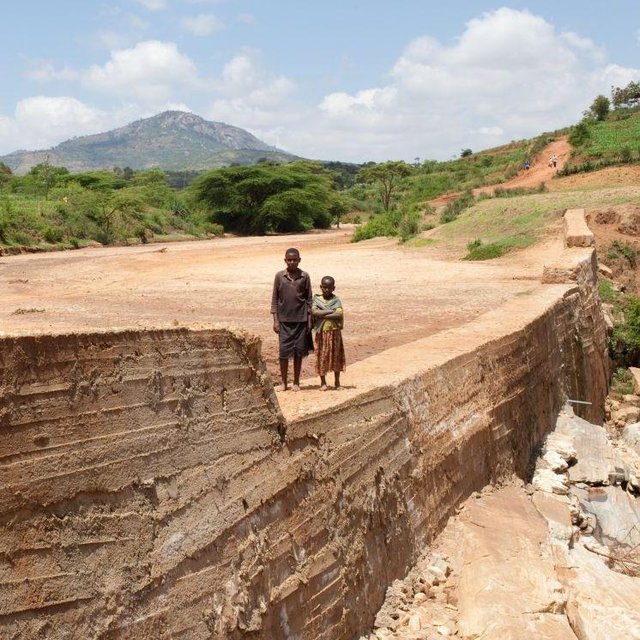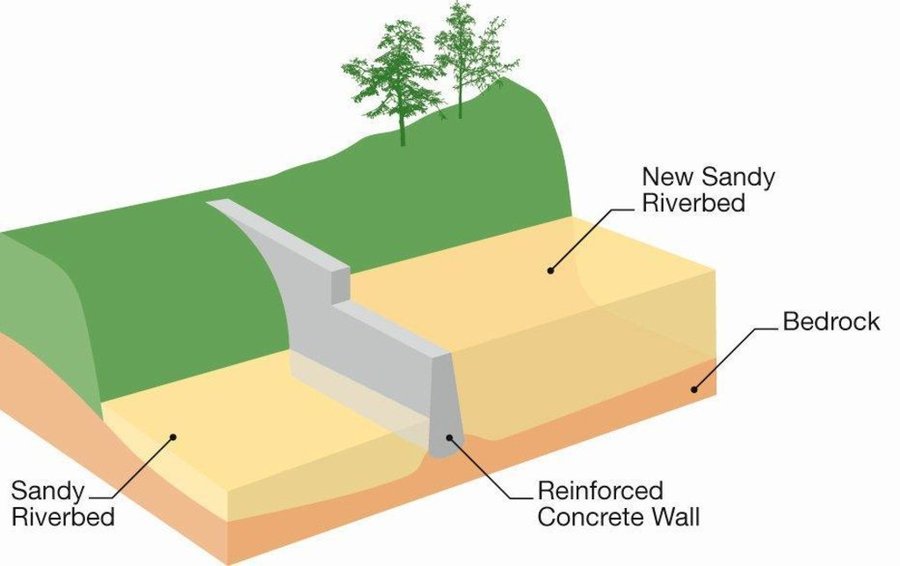



A sand dam is typically 1 - 5 metres high and 10-50 metres across. When it rains the dam captures soil laden water behind it – the sand in the water sinks to the bottom, whilst the silt remains suspended in the water. Eventually the dams fill with sand - sometimes after only one rainfall or over 1 – 3 seasons. 25 to 40% of the volume of the sand held is actually water. A mature sand dam can store millions of litres of water – refilling after each rainfall providing a year round supply to over 1,000 people.
Purpose of the Technology: Sand dams are a simple, low cost and low maintenance, replicable rainwater harvesting technology. They provide a clean, local water supply for domestic and farming use and are suited to arid and semi-arid areas of the world. It is a solution that is scaleable and has a broader application for use as a rural and game park road crossing to replace less effective culvert bridges.
Establishment / maintenance activities and inputs: Sand dams are the lowest cost form of rainwater harvesting and its robust nature and very low operational and maintenance costs make it particularly suited to remote and poorly served regions. A typical dam using 500 bags of cement would approx be 40 metres in length with a spillway 2 metres above the bedrock. The dam is constructed using stone masonry placed in timber formwork. Such a dam costs approximately USD 11,800 (in 2012 prices). This consists of materials (cement, steel reinforcement, timber, transport) and dam permit USD 8,800 (75%), project management including technical support from skilled local artisans and dam designers USD 2150 (18%) and finance and administration costs of implementing organisation USD 850 (7%). Local people freely contribute their labour to collect rock, sand and water, terrace and protect the immediate catchment and construct the dam. If this contribution was costed and included the cost of the dam would almost double. The maintenance and repair costs of the dam provided it has been well designed and constructed is negligible. Local users are responsible for the management and repair of the dam and its abstraction system. Where a hand pump is fitted, local users fund the repair and replacement of the pump as required. The purchase and repair of petrol powered water pumps which some groups use to irrigate adjacent land is the responsibility of the members of the local group.
Natural / human environment: Because the water is stored within the sand, evaporation losses are very low, the sand filters the water and water-vector diseases such as malaria are controlled. Sand dams provide significant environmental benefits such as aquifer recharge, increased downstream flows in the dry-season, rejuvenation of river ecologies and moderation of floods. As such, it contributes to ecosystem services and climate change adaption.

Местоположение: Eastern Province, Kenya, Machakos, Kitui and Makueni Counties, Кения
Число исследованных участков, где применяется Технология:
Пространственное распространение Технологии: равномерно-однородное применение на определенной площади (approx. 1000-10 000 км2)
На постоянно охраняемой территории?:
Продолжительность применения Технологии: 10-50 лет назад
Тип внедрения/ применения





| Опишите затраты | Единица | Количество | Затраты на единицу (Kenyan Shilling) | Общая стоимость на единицу (Kenyan Shilling) | % затрат, оплаченных землепользователями |
| Оплата труда | |||||
| Collection of rock, sand and water | Persons/day | 220,0 | 2,5 | 550,0 | 100,0 |
| Terracing and protection of immediate catchment | Persons/day | 100,0 | 2,5 | 250,0 | 100,0 |
| Construct dam | Persons/day | 500,0 | 2,5 | 1250,0 | 90,0 |
| Cure dam | Persons/day | 50,0 | 2,5 | 125,0 | 100,0 |
| Оборудование | |||||
| Tools | per dam | 1,0 | 300,0 | 300,0 | |
| Строительные материалы | |||||
| Cement (bag = 50kg) | bags | 500,0 | 9,15 | 4575,0 | |
| Steel (12m x Y20 steel bar) | pieces | 7,0 | 45,7 | 319,9 | |
| Steel | per dam | 1,0 | 1000,0 | 1000,0 | |
| Другие | |||||
| Skilled labour | per dam | 1,0 | 3000,0 | 3000,0 | |
| Общая стоимость запуска Технологии | 11'369.9 | ||||
| Общие затраты на создание Технологии в долларах США | 136.99 | ||||
Tree planting enabled by dams increases fuel wood availability
Construction of sand dams is labour intensive. This is more than offset by the time savings created by reducing the time required to collect water.
Sand dams are integrated within a wider programme that promotes food security and self sufficiency
Reduced water borne disease. Increased access to higher quality water and improved food security improves health.
Working through and strengthening self help groups builds on the local tradition of self-help called mwethya
Increases the capacity of self-help groups
Learning exchanges between self-help groups and demonstration plots builds knowledge and adoption of conservation farming
If ownership and management of dam is not clear and legally protected this can result in conflict
Tree nursersies and agro-forestry enabled by sand dams improves access to fuel food
Sand dams save farmers hours every day that they can invest in improving their farms to grow more food and create the potential for farmers to irrigate trees and crops, water livestock and generate an income. It is strongly advised that sand ams are integrated within a wider land management and livelihoods programme in order to realise these opportunities to the maximum. Community ownership and management is critical to achieving this
Sand dams provide secure water source for livestock
Irrigated horticulture and tree nurseries improves farmer incomes
Количество до применения УЗП : <1000m3
Количество после применения УЗП: 2-10,000m3
Sand filters the water
Sand dams capture excess flood flows
Terracing the immediate dam catchment reduces surface runoff
Studies of Kitui dams found watertable increased by several metres
Once the water level in the dam aquifer is below 60cm, evaporation losses from the sand are negligible
Sand dams recharge the aquifer and raises the watertable above and below the dam
Salinity of sand dam water is often less than surrounding groundwater
Rejuvenation of riverine ecologies and planting indigenous trees increases diversity
Riverine ecologies rejuvenated
By creating a buffer, flooding downstream of a dam or series of dams is reduced
Tree nursersies enabled by sand dams capture store carbon and reduce deforestation